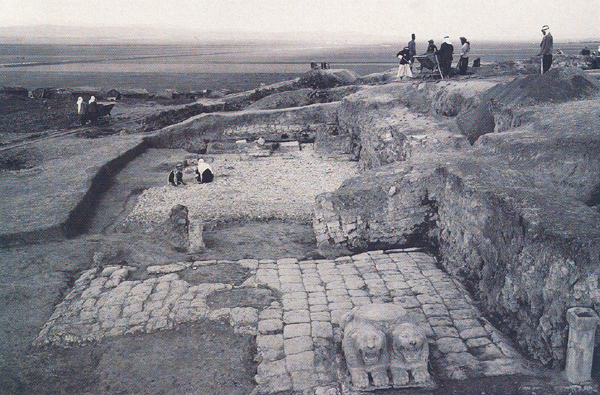Image Details

Oriental Institute/Univ. of Chicago
Snarling stone lions, in the foreground of the photo, crouched at the entrance to the eighth-century B.C.E. temple at Tell Ta’aynat in Syria. Discovered in the 1930s by the University of Chicago’s Oriental Institute, this structure is the only known ancient temple with a plan so close to the Bible’s description of Solomon’s Temple. Both buildings consisted of three parts lined up on an east-west axis: a portico or forecourt, a long room, and a shrine. This tripartite division is easily seen in the plan and the reconstruction (see drawings).
The two pairs of lions in the temple’s portico originally served as bases for two monumental columns supporting the roof (see reconstruction drawing). The massive pillars that stood before Solomon’s Temple, however, appear to have been freestanding.
In the photo, two workers stoop on the pebbled floor of the central room. Beyond them, toward the top of the picture, lies the small shrine room, where excavators found the remains of a statue platform and a square structure that may have been used for offerings.
